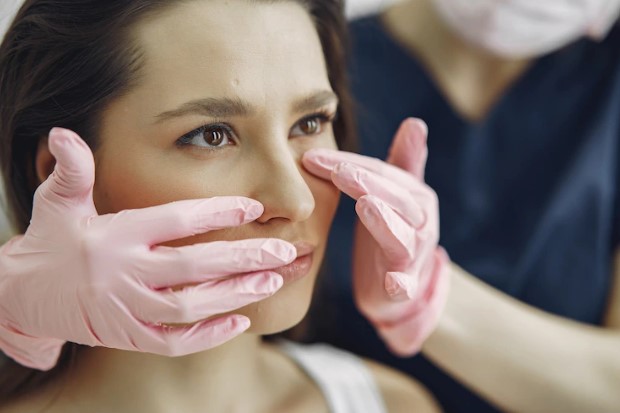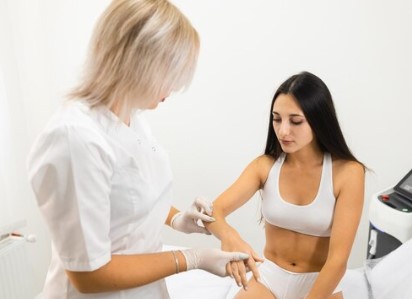
Skin diseases are a wide range of conditions that affect the skin and can be caused by : bacterial infections, viral infections, fungal infections, allergic reactions, skin cancers or parasites. Also, there is the possibility that they are hereditary or even have some unknown cause.

The skin, being the largest organ in the human body, is made up of three layers: the epidermis, the dermis and the hypodermis. Among the functions that we can highlight, it is the protective barrier, which defends our body from attacks by external agents such as viruses and bacteria. This protective capacity can be altered if an element inflames or irritates the skin. These pathologies can range from primary skin diseases to systemic diseases whose symptoms manifest in different ways.
.jpg)

The skin, being the largest organ in the human body, is made up of three layers: the epidermis, the dermis and the hypodermis. Among the functions that we can highlight, it is the protective barrier, which defends our body from attacks by external agents such as viruses and bacteria. This protective capacity can be altered if an element inflames or irritates the skin. These pathologies can range from primary skin diseases to systemic diseases whose symptoms manifest in different ways.
.jpg)
Most common skin diseases
Vitiligo It is characterized by the appearance of white spots of various sizes and in different parts of the body , mainly in those most exposed to the sun, such as hands, arms, face and feet.
Vitiligo is not a contagious disease. However, it can cause sunburn and, in some cases, skin cancer. What causes this is the consequence of the destruction or incorrect functioning of melanocytes, which are the cells that produce melanin. Therefore, although it affects all skin types, it is more noticeable in dark skin tones.
Acne
The acne It is the most common and well-known disease. It has a prevalence of 80% in people between 11 and 30 years old. It is multifactorial, which means that it is caused by the intervention of several factors: genetic, environmental and individual skin factors.
Acne occurs because hair follicles become clogged with dead skin cells, bacteria or dry sebum that accumulates. and blocks the sebum that should come to the surface of the skin through the pores. Depending on the damage caused to the skin and the number of pimples present, acne can be mild, moderate or severe.
Skin cancer
skin cancer It arises when abnormal skin cells grow uncontrollably, due to damage to their DNA caused especially by ultraviolet radiation. Although it is more common in areas of the body exposed to the sun, it can also occur in areas that are not normally exposed.
Among the types of skin cancer that exist, Melanoma is the most dangerous , since its advanced stage can spread to internal organs and therefore put the person's life at risk. Detected in time, it usually has a cure, which is why you have to pay close attention to changes in the skin.
Athlete's foot
It is one of the most contagious skin pathologies, caused by a fungus that causes rashes accompanied by itching, burning and, sometimes, peeling. It can spread to other parts of the body or to other people if they come into contact with the infected area, either directly or indirectly.
Warts
Warts are small, benign epidermal prominences that can appear anywhere on the body. They are normally asymptomatic, although they can cause mild pain. They can disappear on their own, although they can also be eliminated with simple treatments.
Viruses that cause warts can be spread through skin contact or by sharing objects.
Psoriasis
Is a chronic skin disease that causes the appearance of scales and reddish spots, causing pain and itching. Genetic and environmental factors intervene in the appearance of psoriasis. In addition, it has been shown that when the immune system is weakened or one suffers from stress, obesity or smoking, there is a greater probability of suffering from it.
These are presented as the best-known diseases and pathologies suffered by the skin. However, There are also bacterial, viral or fungal infections; allergic reactions; autoimmune diseases and parasites. Because these occur silently or with small reactions It is important that you are aware of the changes you have in different areas of the body and consult in time to validate the necessary treatments. It is essential that you do not self-medicate, scratch or perform any action that could have side effects on your skin, so consult your dermatologist if necessary.

Sources
7 very common skin diseases and their relationship with genetics
skin diseasesAcne
The acne It is the most common and well-known disease. It has a prevalence of 80% in people between 11 and 30 years old. It is multifactorial, which means that it is caused by the intervention of several factors: genetic, environmental and individual skin factors.
Acne occurs because hair follicles become clogged with dead skin cells, bacteria or dry sebum that accumulates. and blocks the sebum that should come to the surface of the skin through the pores. Depending on the damage caused to the skin and the number of pimples present, acne can be mild, moderate or severe.
Skin cancer
skin cancer It arises when abnormal skin cells grow uncontrollably, due to damage to their DNA caused especially by ultraviolet radiation. Although it is more common in areas of the body exposed to the sun, it can also occur in areas that are not normally exposed.
Among the types of skin cancer that exist, Melanoma is the most dangerous , since its advanced stage can spread to internal organs and therefore put the person's life at risk. Detected in time, it usually has a cure, which is why you have to pay close attention to changes in the skin.
Athlete's foot
It is one of the most contagious skin pathologies, caused by a fungus that causes rashes accompanied by itching, burning and, sometimes, peeling. It can spread to other parts of the body or to other people if they come into contact with the infected area, either directly or indirectly.
Warts
Warts are small, benign epidermal prominences that can appear anywhere on the body. They are normally asymptomatic, although they can cause mild pain. They can disappear on their own, although they can also be eliminated with simple treatments.
Viruses that cause warts can be spread through skin contact or by sharing objects.
Psoriasis
Is a chronic skin disease that causes the appearance of scales and reddish spots, causing pain and itching. Genetic and environmental factors intervene in the appearance of psoriasis. In addition, it has been shown that when the immune system is weakened or one suffers from stress, obesity or smoking, there is a greater probability of suffering from it.
These are presented as the best-known diseases and pathologies suffered by the skin. However, There are also bacterial, viral or fungal infections; allergic reactions; autoimmune diseases and parasites. Because these occur silently or with small reactions It is important that you are aware of the changes you have in different areas of the body and consult in time to validate the necessary treatments. It is essential that you do not self-medicate, scratch or perform any action that could have side effects on your skin, so consult your dermatologist if necessary.

Sources
7 very common skin diseases and their relationship with genetics
Most common skin pathologies and diseases
Carolina Cardona Valencia, Social Communicator.
For Satori Beauty

